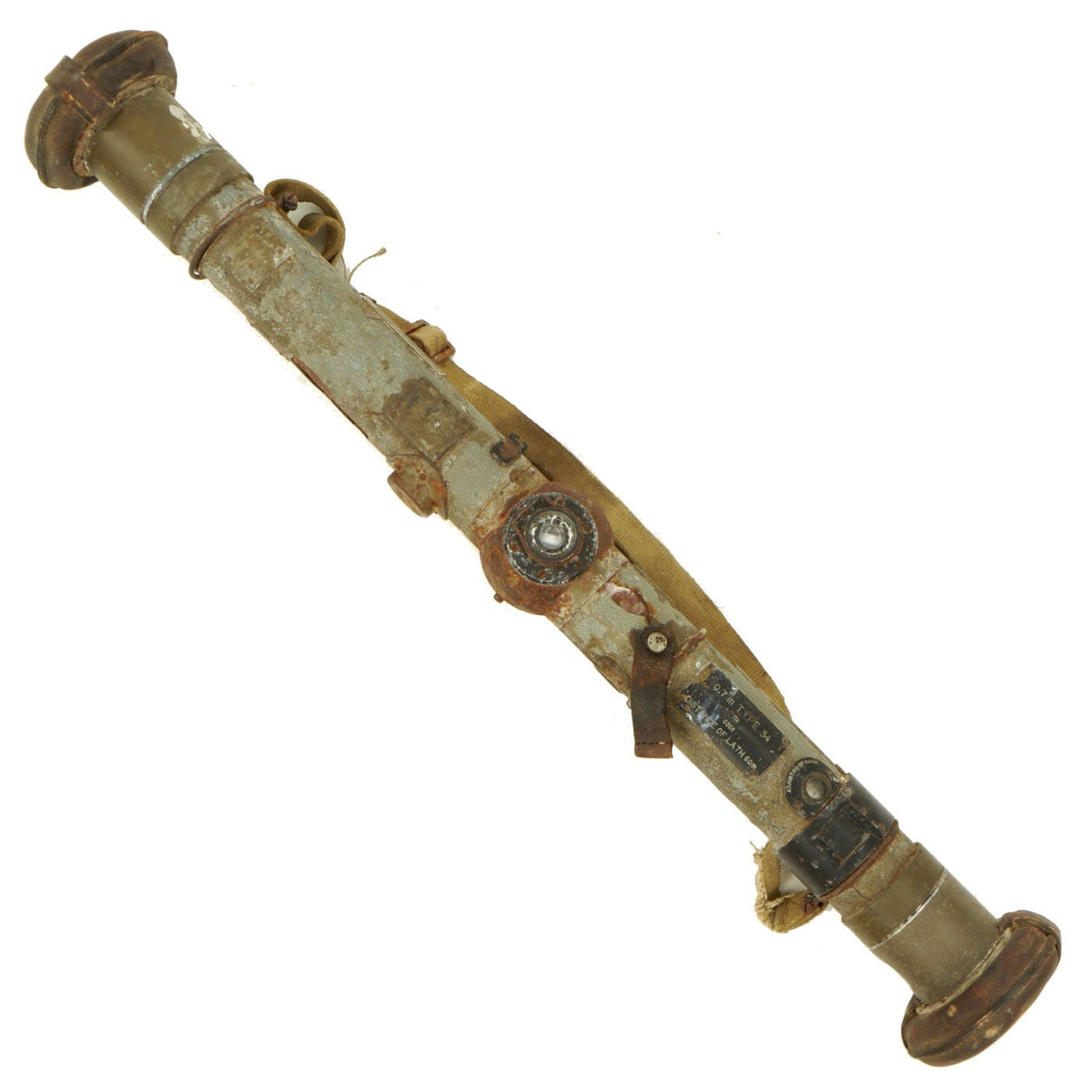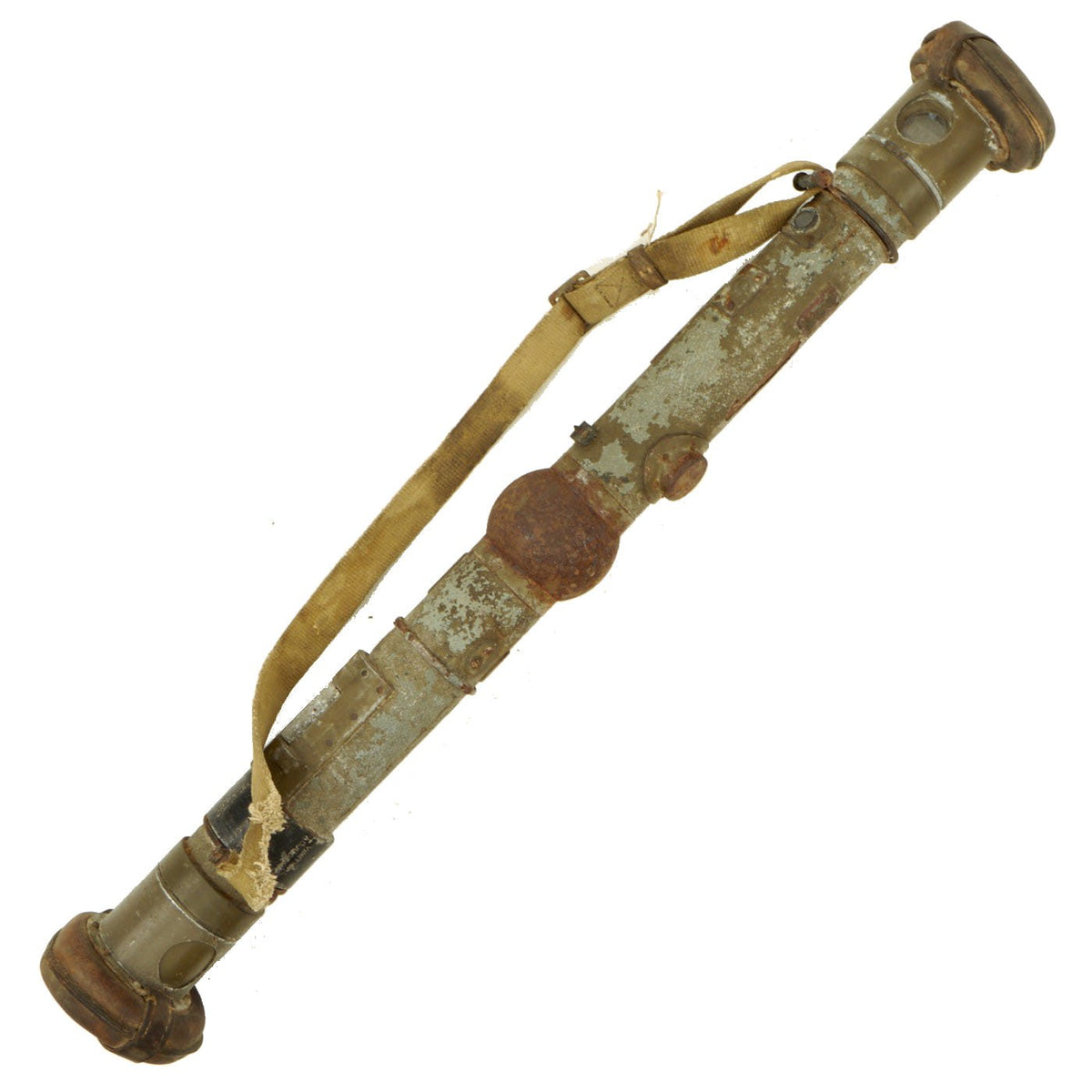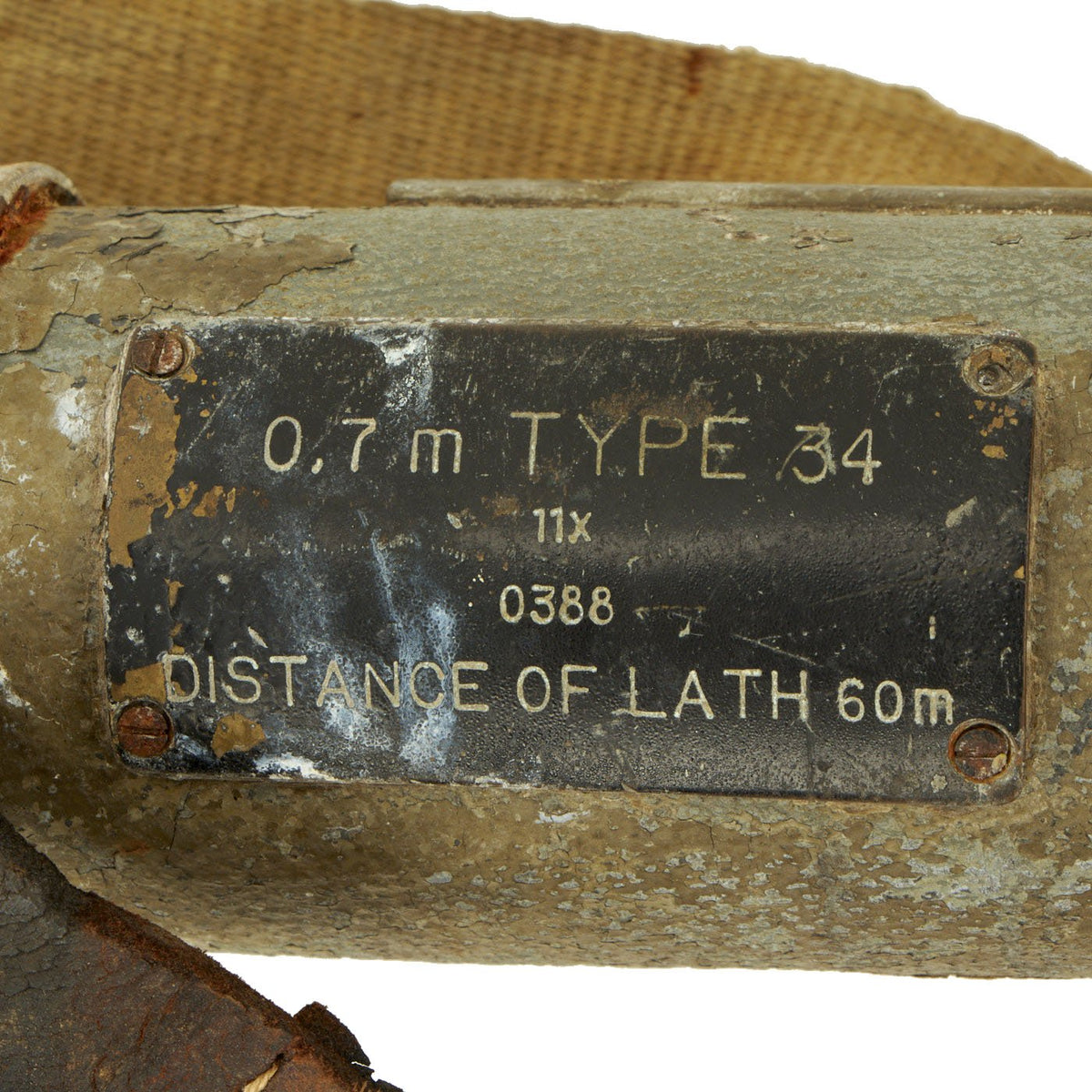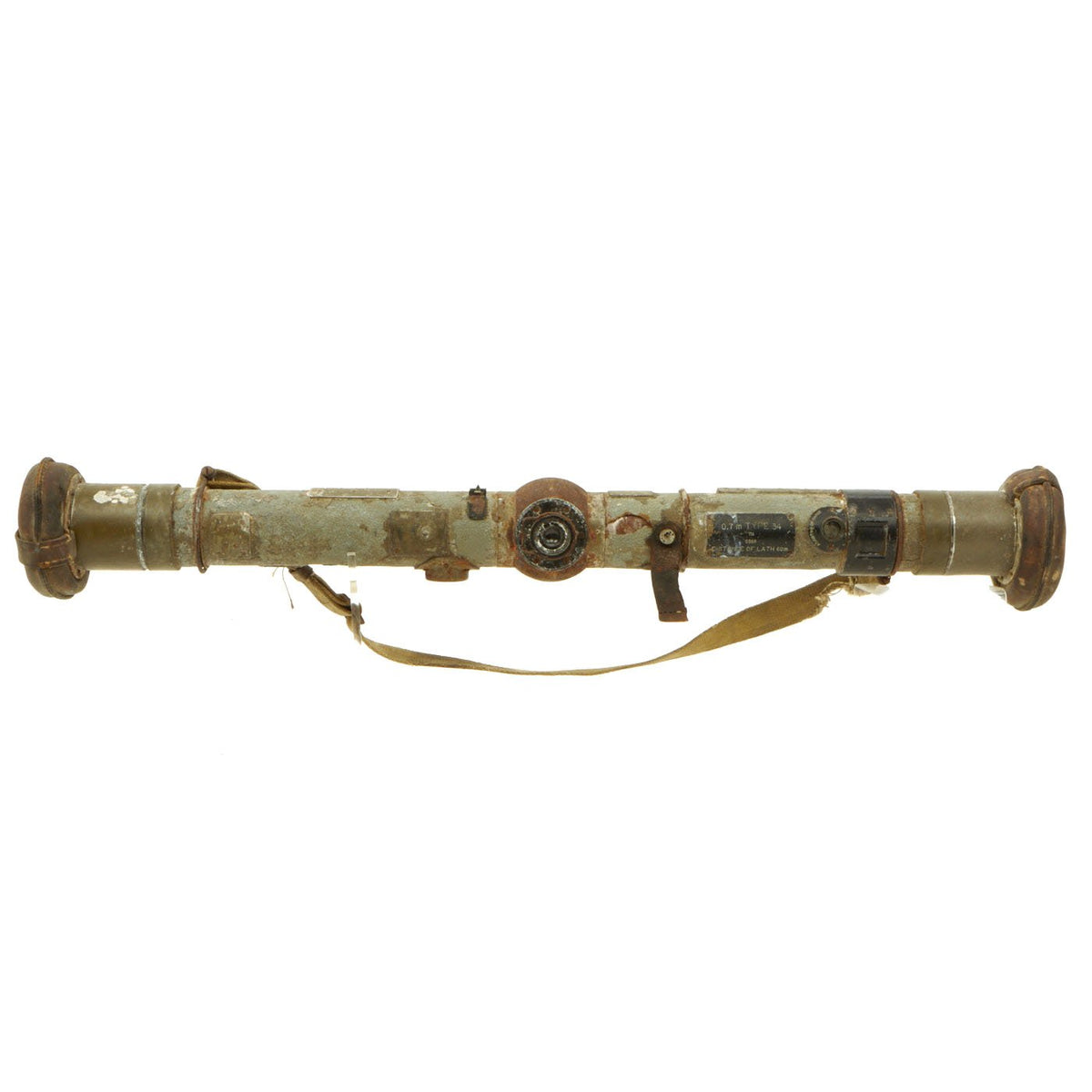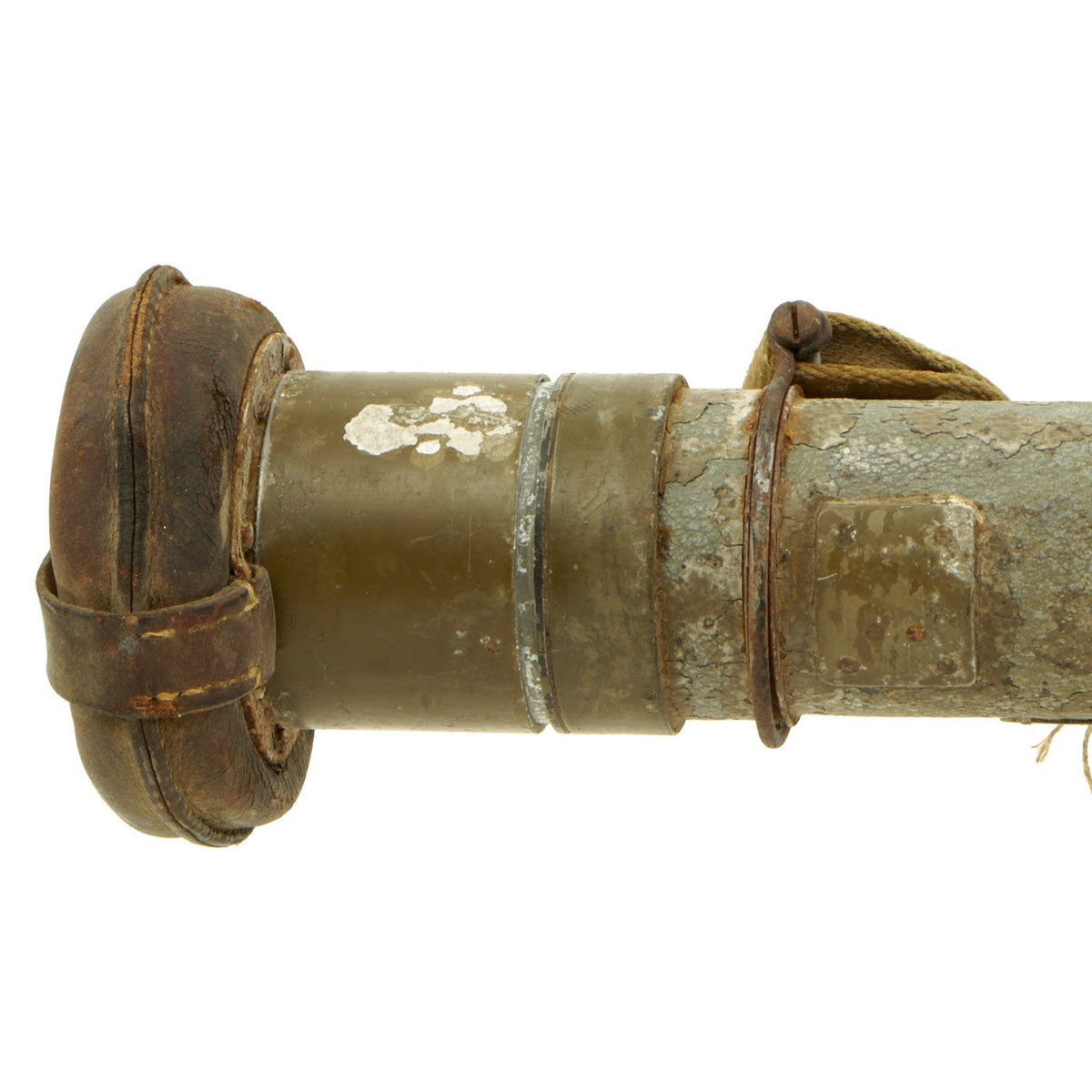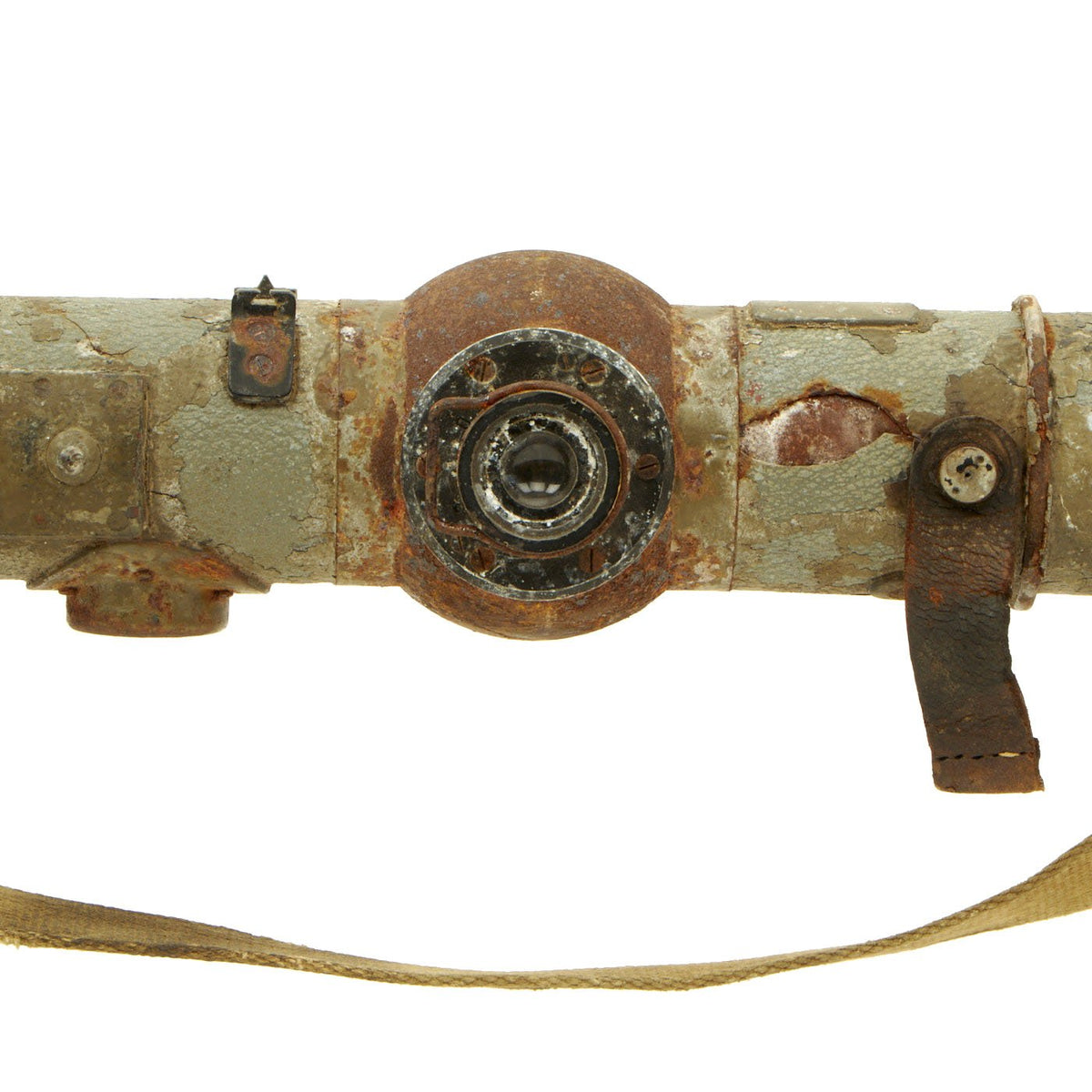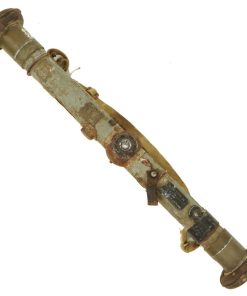Original German WWII EM 34 Range Finder Found at Aberdeen Proving Ground Original Items
$ 495,00 $ 148,50
Original Item: Only One Available. This is a World War Two German Entfernungsmesser 34 (range finder 34 or EM 34), finished in a textured grey paint. This example was reportedly found at the Aberdeen Proving Ground in the 1970s after it had been tested and forgotten. It was exposed to moisture and shows rust and staining. The optics show light but are not clear, this is probably due to the fact that one cover is closed so only one side is allowing in light.
This type of EM 34 range finder was used by German machine gun, mortar and some artillery units during the Second World War. It could also be used for reconnaissance purposes. The range finder is fitted internally with a series of prisms, beam splitters and mirrors, which divide the viewed image into two halves. When focused into one image, the range finder provides a calculated distance or altitude to the target.
APG is the U.S. Army’s oldest active proving ground, established on 20 October 1917, six months after the U.S. entered World War I. The planning and construction were overseen by Brigadier General Colden Ruggles, who later served as the Army’s Chief of Ordnance. Its location allowed design and testing of ordnance materiel to take place near contemporary industrial and shipping centers. The proving ground was created as a successor to the Sandy Hook Proving Ground, which was too small for some of the larger weapons being tested. At the peak of World War II, APG had billeting space for 2,348 officers and 24,189 enlisted personnel.
Fast Shipping with Professional Packaging
Thanks to our longstanding association with UPS FedEx DHL, and other major international carriers, we are able to provide a range of shipping options. Our warehouse staff is expertly trained and will wrap your products according to our exact and precise specifications. Prior to shipping, your goods will be thoroughly examined and securely secured. We ship to thousands clients each day across multiple countries. This shows how we're dedicated to be the largest retailer on the internet. Warehouses and distribution centres can be located throughout Europe as well as the USA.
Note: Orders with more than one item will be assigned a processing date depending on the item.
Before shipping before shipping, we'll conduct a thorough inspection of the items you have ordered. Today, the majority of orders will be delivered within 48 hours. The delivery time will be between 3-7 days.
Returns
The stock is dynamic and we cannot completely manage it because multiple stakeholders are involved, including our factory and warehouse. So the actual stock may alter at any time. It's possible that you may not receive your order once the order has been made.
Our policy is valid for a period of 30 days. If you don't receive the product within 30 days, we are not able to issue a refund or an exchange.
You can only return an item if it is unused and in the same state as the day you received it. You must have the item in its original packaging.
Related products
Uncategorized
Uncategorized
Uncategorized
Uncategorized
Uncategorized
Uncategorized
Uncategorized
Uncategorized
Uncategorized
Uncategorized
Uncategorized
Uncategorized
Uncategorized
Uncategorized
Uncategorized
Uncategorized
Uncategorized
Uncategorized
Australian WWII Owen MK1 Machine Carbine SMG Custom Fabricated Replica with Sling Original Items
Uncategorized
